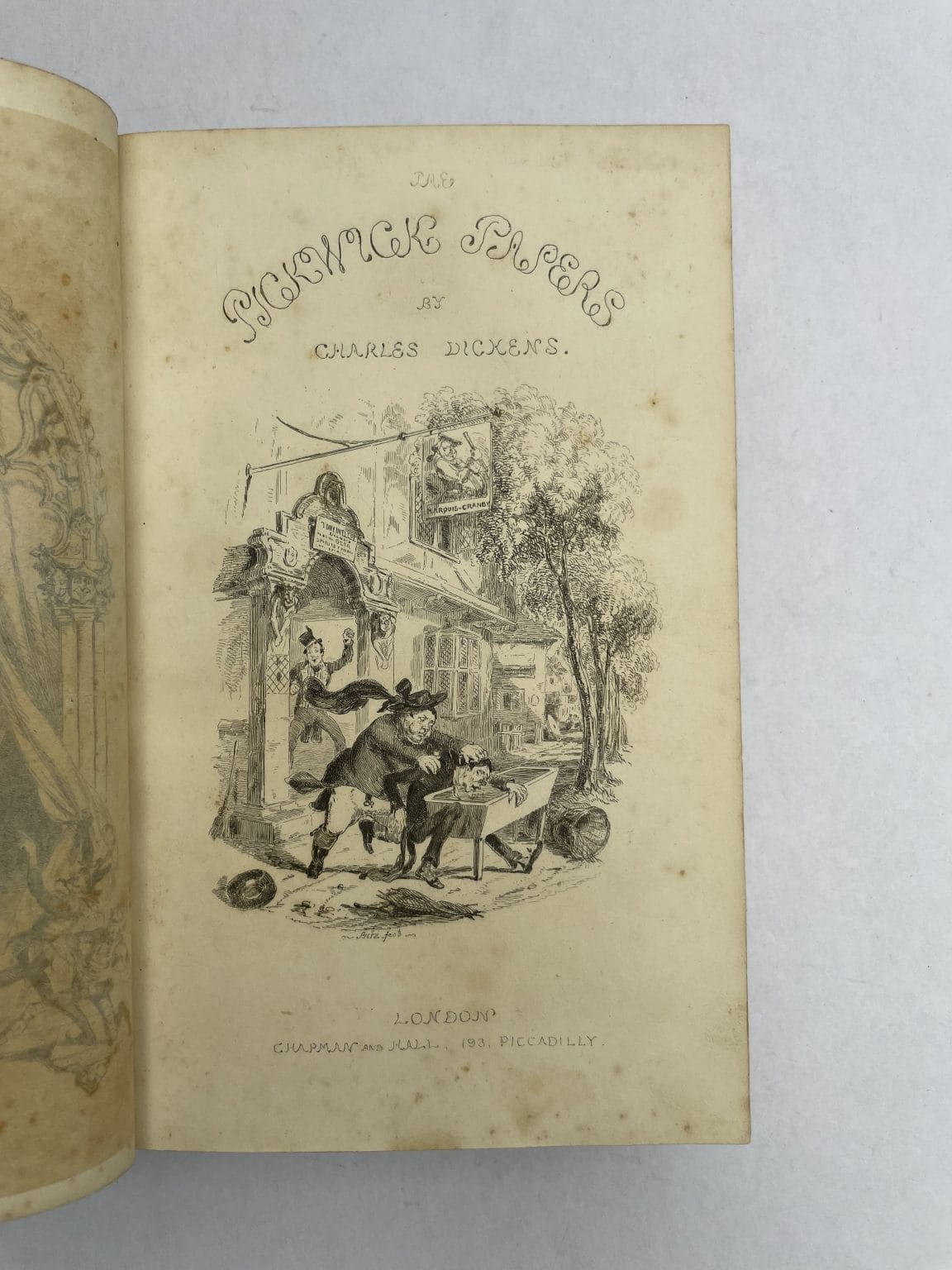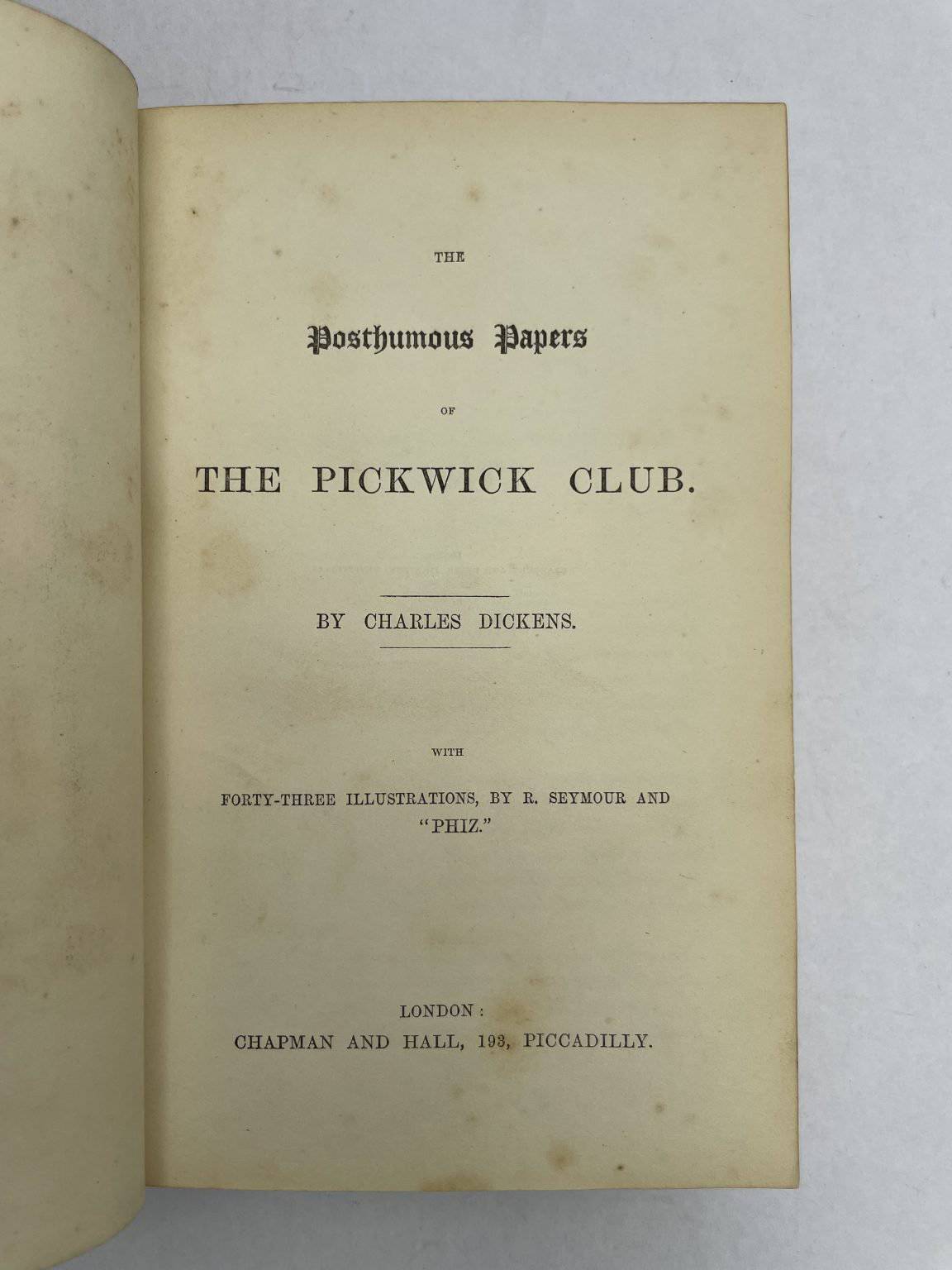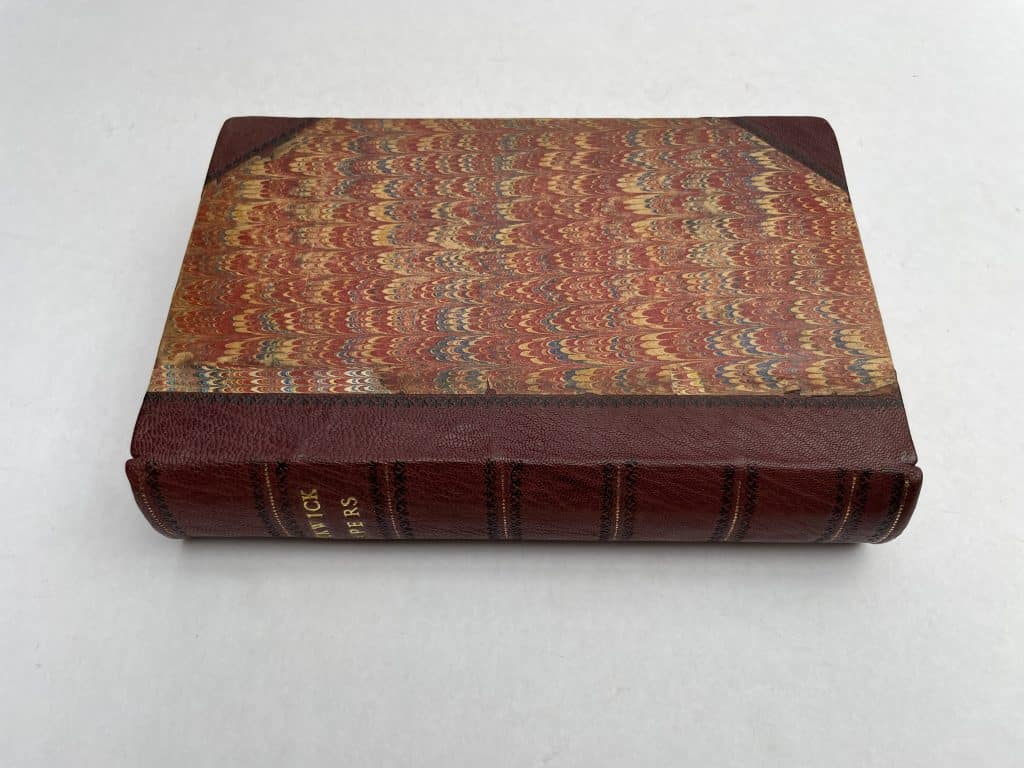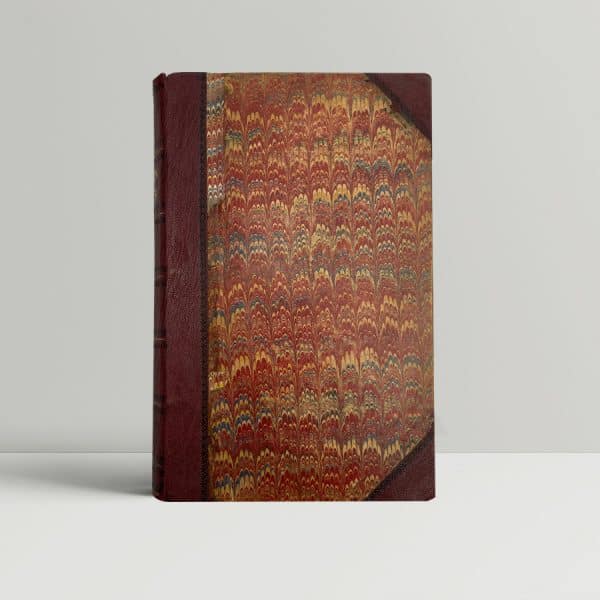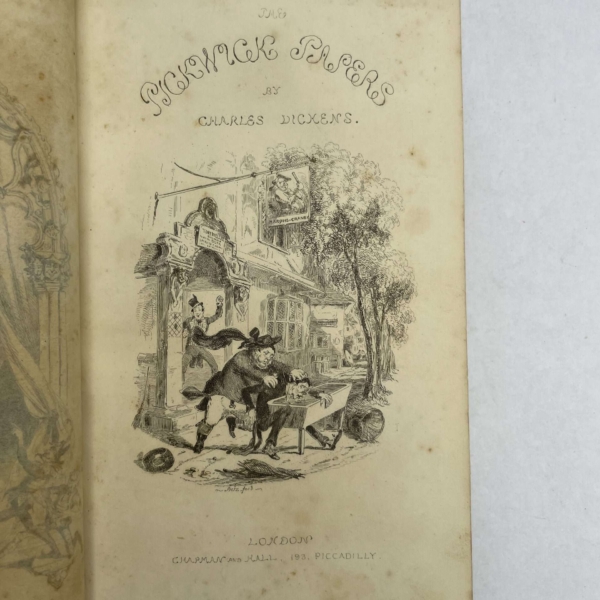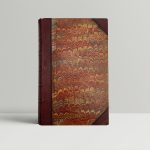Charles Dickens – The Posthumous Papers of the Pickwick Club – First UK Edition 1837
Original price was: £1,250.00.£950.00Current price is: £950.00.
First edition, second issue. Published by Chapman and Hall in London, 1837. This is a near fine copy of the first book issue. Bound in half tooled morocco with marbled paper, this is a fine production. The gilt titling on the spine is bright. Finely illustrated with 43 engravings by H. T. Browne (“Phiz”) and R. Seymour, each of which are present. The issue point of ‘S. Veller’ on page 342 is present, though not ‘this friends’ on page 400, for instance. The tissue-guard is present on the frontispiece, though typically foxed. The text blocks are semi-textured with brown spotting, nicely matching the ornate covers. The bookplate of Henry Vaughan Davis is present on the front paste down. There is a slight tear to page vii, which has been repaired as evidenced on the verso. Otherwise, this is a near fine copy of a fine collectible title.
Dickens’ first novel. Because of his success with Sketches by Boz published in 1836, Dickens was asked by the publisher Chapman & Hall to supply descriptions to explain a series of comic “cockney sporting plates” by illustrator Robert Seymour, and to connect them into a novel. The book became a publishing phenomenon, with bootleg copies, theatrical performances, Sam Weller joke books, and other merchandise. On its cultural impact, Nicholas Dames in The Atlantic writes, “‘Literature’ is not a big enough category for Pickwick. It defined its own, a new one that we have learned to call “entertainment.” Initially published in 19 issues over 20 months, the success of The Pickwick Papers popularised serialised fiction and cliffhanger endings.
Seymour’s widow claimed that the idea for the novel was originally her husband’s, but Dickens strenuously denied any specific input in his preface to the 1867 edition: “Mr Seymour never originated or suggested an incident, a phrase, or a word, to be found in the book.”
(We don't keep all of our stock in the shop, so send us an email if you're planning a trip to see a particular author or book.)
- Description
Description
First edition, second issue. Published by Chapman and Hall in London, 1837. This is a near fine copy of the first book issue. Bound in half tooled morocco with marbled paper, this is a fine production. The gilt titling on the spine is bright. Finely illustrated with 43 engravings by H. T. Browne (“Phiz”) and R. Seymour, each of which are present. The issue point of ‘S. Veller’ on page 342 is present, though not ‘this friends’ on page 400, for instance. The tissue-guard is present on the frontispiece, though typically foxed. The text blocks are semi-textured with brown spotting, nicely matching the ornate covers. The bookplate of Henry Vaughan Davis is present on the front paste down. There is a slight tear to page vii, which has been repaired as evidenced on the verso. Otherwise, this is a near fine copy of a fine collectible title.
Dickens’ first novel. Because of his success with Sketches by Boz published in 1836, Dickens was asked by the publisher Chapman & Hall to supply descriptions to explain a series of comic “cockney sporting plates” by illustrator Robert Seymour, and to connect them into a novel. The book became a publishing phenomenon, with bootleg copies, theatrical performances, Sam Weller joke books, and other merchandise. On its cultural impact, Nicholas Dames in The Atlantic writes, “‘Literature’ is not a big enough category for Pickwick. It defined its own, a new one that we have learned to call “entertainment.” Initially published in 19 issues over 20 months, the success of The Pickwick Papers popularised serialised fiction and cliffhanger endings.
Seymour’s widow claimed that the idea for the novel was originally her husband’s, but Dickens strenuously denied any specific input in his preface to the 1867 edition: “Mr Seymour never originated or suggested an incident, a phrase, or a word, to be found in the book.”


